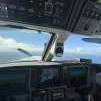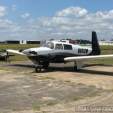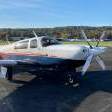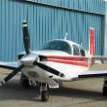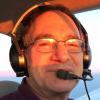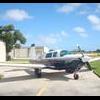Leaderboard
Popular Content
Showing content with the highest reputation on 03/22/2017 in all areas
-
From all the bad backs around here, I am gathering that Mooney needs to go back to the drawing board on this whole rubber-puck-landing-gear thing. Or you guys just need to learn to land softer.6 points
-
I always tell my patients that i would much rather have then say "I wish that I did this sooner" rather than "I wish I didn't do this." You are ready when you are ready. Most of the time it is ok to wait unit it is the right time for you. Sorry it was such an ordeal to get you fixed up. Good job seeking out the right doc for you. I'll have more about that for @peevee offline. My favorite t-shirt: "It's not Rocket Surgery" Today was all spine surgery. Tomorrow is lumber fusion surgery and then a brain tumor. I love that everyday is different. @Hyett6420 - really not all that impressive - when I'm at home, I am still the trash boy (have to remember to take it our Thursday night ). And it doesn't get me any priority with ATC. Sounds like you are in a much better situation than some of the others. Spinal stenosis can certainly be a bad problem, but the fixes are a little easier. Physical Therapy, Injections by pain management. If that doesn't work, the surgery for that is usually about 1 hour or so and maybe home same day or one night in the hospital. Probably flying in under one month. Feel free to PM with questions. Yes, the spondy often progresses to needing surgery. I absolutely recommend looking around for the correct surgeon for you. The internet is a good starting point, but don't rely solely on the bad or good that you see there. I usually treat spine fractures (I am assuming here, I couldn't find it rereading the accident thread) for about 12 weeks in the brace. Depends a little on the type of injury, but that is a good general rule. If you are complaining about the brace, that is awesome! Given what you could have been complaining about - I'll take it. I hope all else is healing well! Bone spurs in the neck are usually fairly easy to deal with. If you are talking about a cervical discectomy and fusion, you could be back in flying shape in 2-4 weeks. If it is just a pinched nerve, put it off as long as you can deal with it (pinched spinal cords are a different issue). Happy to answer questions if you want. A second opinion is always a good thing when considering anything like spine surgery. No one should discourage it if you mention seeking one. Don't feel bad about it.5 points
-
Had a broken back in '94. Replace two vertebrae and bone craft another one. Told me I would never be able to use my back normal again. Said may be 60%. 23years later and I'm flying. Good gym, good food and dont tell me I cant. If you take it easy you will be up in no time. It took me 4months.4 points
-
I tend to get a little peeved when folks start discussing lunch plans or hey Joe is that you but radio clutter is kind of a case by case issue heck at my home field you can go hours without hearing a thing. And to be honest if it's not busy I tend to enter the pattern on whatever leg I'm on as I get close if it's ten miles out and on the base heading then that's my entry. There have been times when there might be one other plane in the area and they sometimes get pretty bent if I announce a ten mile final for straight in. But I just let it roll off and do what I think is safe and best for the situation and sometimes a 45 mid field could put you into a crowded mess. I think it's also very good form to work with others in sorting out the order of things be gracious let the fast movers go ahead etc. and at the same time you fast movers shouldn't think you deserve first dibs when way out if some guy in a 172 is in the pattern already. At the uncontrolled fields we are our own stewards and it's all about communication except for the guy with no comm's (something I still think strange) that it's not required.4 points
-
Your mechanic will love you! Are his kids old enough for college, or just needing braces?3 points
-
I went to take her to my hangar field and fly my first solo flight yesterday morning at Sunrise. Air was silk smooth. First time I have flown her in anything other than rough air. With no flaps and the same take off trim setting I was using with half flaps, she flew off the runway on her own like a Cessna (such blasphemy.). The gear came right up after a little bit of struggle operating the thumb button. I was taking her to my hangar in Hugo to see if I could get both her and my Cessna 140 in the hangar. I had a headache to a point that I almost postponed the flight, but I did a few maneuvers in the smooth air and fell deeply in love. The precision and crisp responsiveness of the controls in the smooth air made it so enjoyable to fly. I managed to do a few things with the 430 which helped me get comfortable. Just flying and manipulating the 430 and the panel helps me get comfortable and confident. It was only a 20 mile flight, but she didn't seem to want to go very fast. Flying 25 squared and trimmed for cruise she never made it to the yellow arc on the air speed indicator. When I flew the same flight with the instructor aboard she reached the yellow. The ferry pilot had said she flew 137 Knots air speed bringing her from Kerrville,. I hope she is faster than this. After my maneuvers, I did a no flap landing and it was my best yet. If I had felt better and hadn't needed to move the planes around, I would have flown for awhile before putting her away. I think I might get some flying weather late this afternoon. Both planes did not fit in the hangar so the 140 is now tied down outside. I am trying to find somewhere to get her out of the weather very soon. I can't wait to do some airport hopping and get comfortable with her. I have to do my taxes, so once that is no longer hanging over my head, I plan on burning lots of 100LL Saga will continue.....3 points
-
One of the things I found surprising in reality verses this situation.... 1) Some analog needle displays don't work very well in heavy turbulence. Trying to follow a needle that is bouncing around has got to be tough. then there were these other things.... 2) Doing a practice approach using a VOR a ways back, didn't lead to the airport. It lead to the shopping mall next door. Low to the ground, the runway was not easy to find where we weren't looking... Analog VORs are not as good as the GPS counterpart, often... especially if the VOR isn't on the airport. Our approach Looked very similar to the graphics of the flight path of this situation. The pilot ended the approach before he got to the airport. He was not aligned with the airport. 3) their portable GPS supplied the data for the flight path graphics. It seems unknown if the pilot was able to get anything useful from it during the flight... 4) the wind sheer seems to have had an effect on the flight. Significant wind at altitude, not much in comparison near the ground. 5) Low ground speed according to the controller. High vertical speed prior to impact. Sounds like the air speed was diminishing as they got closer to the ground. 6) All the broken stuff was post impact. The approach is slow enough that a stall would occur prior to bending anything. 7) What I am reminded of in this situation is know how your instruments work in heavy turbulence. If they are bouncing all around, they are not going to be usable... this is typical of old worn analog gauges. The Turn Coordinator is very sensitive to this phenomena on a good day. So partial panel using a wet compass and TC would be pretty dodgy.... 8) bouncing all around at the end of a flight, running lower on fuel, not being able to execute the approach as expected... sounds pretty stressful. 9) know yourself, know your plane, and be current... Hoping to maintain a positive light on the situation. There is plenty to learn from this accident. Let me know if I mis-stated anything... RIP -a-3 points
-
Me too. Easy problem to solve, gave my wallet to my avionics shop.3 points
-
So when I tried to pump up the right brake there was nothing. Pedal goes all the way to the stop. So I opened the bleed valve. Brake fluid dripped out. It was a little darker than normal. Closed bleed off tried to pump brakes, nothing. My A&P pushed some fluid from caliper up. I was watching reservoir and the air bubble came out. Full break peddle, no more turning left! Thanks Everyone for Ya'll help!!3 points
-
3 points
-
I just call 20 miles out and announce I'm straight in to the most convenient runway.3 points
-
You really don't want to know what it cost to do the prototype! I try not to think about it too much, but I couldn't stand the way the front of my Mooney looked. It lowered the CHT's by 20 degrees F and I picked up 6 knots of speed. I hope to get a little more out of the cooling but carbureted engines run hotter than the IO's. I'm an A&P/IA and have a company that manufactures airplane parts and tooling, GDS Aero. I work for a corporate flight dept full time and then because I just can't get enough airplane stuff, do the other stuff in my spare time. I'm not really a die hard Cheese fan, but I do live for the Bears and Vikings to lose!! Must be pretty smart!3 points
-
Now that brought back memories (from the 70s) Had my fair share of winch tow "launch failures." Sometimes a thermal ripping across the runway, sometimes too steep a takeoff (too much back pressure on the stick), sometimes the safety link simply failed because of age or unknown reasons. The really bad ones are the cable failures, rather than the safety link failures. I really liked the way the kid yanked the release multiple times. If it was a true cable break you don't want to fly around with a few hundred yards of steel cable. Happened to one of our instructors once. The eyelet was jammed and he couldn't get rid of the cable end. The rate of descent with the cable end dragging over the ground was "impressive." Go Gliders!3 points
-
3 points
-
Nervous but excited. Pre-buy next week. https://www.controller.com/listings/aircraft/for-sale/17574153/1965-mooney-m20e2 points
-
Induction looked good, plugs ohmed out to 884 and 992, i think that is good, I'll check the board as I know I saw the resistance somewhere as 800-1200, injector was dirty and the hole was about half sized. Ultrasonic cleaned injector, looks great. Did not put it back together as I need some fuel lube for the injector and spark plug thread lube. Back to work tomorrow night so I might not get to fly till next Sunday or Monday. Sent from my iPad using Tapatalk2 points
-
Wonder if these engine failures on take off could be related on how fast the engine is accelerated. I have seen pilots push on the throttle quickly for take off, while I myself push it slowly. Sudden acceleration impose added stress on the engine due to the inertia of the moving parts. José2 points
-
I had back surgery about a dozen years ago. Best thing I ever did. The problem is, we and the reasons for our back issues are all different. So no one else's experience is particularly relevant.2 points
-
2 points
-
If you're doing a lot of short hops, pattern work, training, or in other words, lots of takeoffs and landings, with little flying in between? Then get a 182. Or some other plane that is good for landing and takeoff on the gravel strips. But if you fly like most of us Mooney owners fly where the number of takeoff's and landings in the log book is dwarfed by the number of flight hours, because most all flights are multi-hour cross country flights. Then most certainly get a plane that excels in the environment where it spends most of it's time... in flight. And that would be a Mooney.2 points
-
I got to do something super fun today. Perfect beach weather, light winds, and I got to take someone flying for the very first time. I mean very first time. No jets or airplanes ever. We had such a blast. She is a natural pilot. Gabriel was in the back seat calling out traffic like a boss. Super awesome rock star WALK-IT-ON landing was a plus. Smiles for days. #MooneyZoom #MooneyGirls2 points
-
well, you gotta figure you can't swing a cat by the tail around an airport and not hit a doctor or lawyer2 points
-
2 points
-
Anthony correctly represented the topic. Yes, it was weight and balance that was my primary motivation - actually primarily balance. The Mooney Rocket has an especially heavy prop - (engine and prop as used in the Cessna 340/414 twins, so a TSIO520NB and the large 3 blade full feathering mcauley - designed in the 1960). So this prop took about 35 lbs off the nice. This dramatically changes the balance of airplane from a nose heavy ride to a nicely balanced ride. But also all other considerations were in the good direction (except it aint cheap). -Ground clearance is much better than the Mcauley 3 blade - by quite a lot - and even better than the smaller 3 prop that had originally come with the original and lower powered TSO360 - so better than from factory - that's nice. -Besides better balance for flight - I was always a bit anxious about so much extra weight on the front gear. -Its a "smidgeon" faster despite being a 4 blade vs a 3 blade. While all things being equal, a 3 blade would be faster - all things are not equal - I attribute this to two things. a) A lighter prop requires less energy to turn and there was a dramatic reduction in the rotating weight, I presume the aerodynamics of this prop are much better as it is a modern scimitar design from a CAD design vs the old school round tipped mcauley designed on a draftsman table. A smidgeon would be I would say maybe 3kts based on before and after speed runs - although the days were from different seasons - because of a technicality with how the prop change was made. Long story on that not relevant here - nor even a big deal. -It is dramatically smoother. I think not just because it is 4 blades vs 3 but also because this material is compliant so I presume it is shaping itself to the load as it bites into the air, vs a stiff metal blade. In fact, while taxing over a bump you can even see the blade defore a tad bit. It is so smooth that every single person who has flown with me has said, WOW thats smooth. -It makes a very cool sound. -And as you would expect, it seems a shorter take off roll (but I never know how to actually measure that without software so I didn't measure the before anyway - but it seems a good bit shorter). And better climb so it seems - but over time you forget what you used to have - it was a peppy climber before. I can say I have climbed to FL17 from field level of 475ft in under 13 minutes on a chilly autumn day (but not winter). -Looks cool! It has turned into a real ramp-eye-candy and people often seem to ask me about it. -The only downside - you gotta buy it...anything airplane costs lots of money - and all I'll say is this costs in the same ball park as all the other prop options if you are shopping new. But contact MT USA for actual pricing. All this said - Mr Snyder if you have a standard M20K 231, with the TSIO 360 - I wonder if this is even an option as this blade setup is made for the power of a big bore continental such as the TSIO520.2 points
-
That's excellent. All my primary and instrument pilots are required to verbalize this prior to every takeoff. Its imperative to have the plan in mind before takeoff so that when the day comes and it happens the decision has already made been made so we're not just turning back to the runway without altitude. Plus not climbing at really steep attitudes helps not stack the deck against you when we have so little precious time to push the nose over. Before take off, it'll go like this: Departing Rnwy 27, we'll need 55 kts before taxi way C (we need 2/3 to 3/4 rotate speed by the halfway point, vocalize what these are) to continue the takeoff roll or abort, after take off if we loose power we'll land straight ahead (small turns only) till we have 1400 MSL (1000' AGL), above 1400'MSL with expected right departure we'll turn right for runway 17. Then on the go, it'll go like this "Oil pressure in the green, Airspeed alive,... we have our speed to continue, ... rotate speed, (Vx is used limited to clear (simulated) obstacles, then accelerate to Vy+10-20 kts) (Iam not a Vx, Vy climb believer, and personally subscribe to John Deakin's Climb Faster method, see http://www.avweb.com/news/features/Climb-Faster-221694-1.html)2 points
-
He did not switch tanks when he normally would, but read the second to last sentence! Not saying he didn't make any mistakes, but he clearly prioritized flying the airplane to avoid hitting power lines first. I give him credit for even having the balls to post this on here.2 points
-
2 points
-
It's a mixed bag. The only thing that matters is that my girlfriend will fly with me in it, and she wouldn't in the Mooney. I've had problems - 2 bad cylinders on a 70 hr SFOH engine, alternator failure, a bunch of small things. The learning curve on the G1000 is steep, for not that much incremental benefit. It's 5-10 KTAS slower than the Mooney on about 1 gph more fuel flow. I was happier with the Mooney. Then again I'm happier with the girlfriend than without. Everything is a trade off.1 point
-
The fuse was located exactly as jcovington said, directly above the FO's right knee, thanks for the help!1 point
-
1 point
-
1 point
-
One thing - the leading edges you see on my prop are the upcharge nickel leading edge and they provide greater abrasion protection than the otherwise standard and very very thin stainless steel leading edge. I read extensively online (across many different kinds of airframes) and many people had abrasion issues of various kinds (esp kicking up gravel) with the stainless steel treatment which was considered too meagerly covering the rest and not one person described such a problem withe nickel treatment you see on mine. Knock on wood - now that said - let's hope that now I wont be that first one.1 point
-
1 point
-
1 point
-
Got the shirt, love it, wore it, and it's already in the laundry. Great job.1 point
-
Check out YouTube videos by piperpainter for back country, unpaved Mooney versatility. He flies an M20-C, as do I, but I dont do it like he does . .1 point
-
Not relevant in this case, since they were equipped with only basic NAV/COM, no GPS or DME. While probably not relevant in tis case, this F had not installed shoulder belts WHICH SHULD BE THE FIRST UPGRADE FOR ANY VINTAGE MOONEY.1 point
-
Since the thread is creeped quickly into finding women and talk of unicorns, if you have never watched this video, it is definitely worth the watch..1 point
-
I liked this post so much I thought it should be shown again. People should be careful about denigrating the humble C. It is the most prolific of the Mooney models. If you add in the M20B and D (virtually the same airplane) the numbers aren't even close. For me, I could afford a bigger, faster, more powerful Mooney. I fly a C because of its simplicity and reliability.1 point
-
If you can afford the buy-in, TBM or PC-12 are the only reasonable options.1 point
-
I have forward slipped my F model with full deflection across what I consider a wide speed spectrum and in all configurations, I've never experienced a decrease in elevator authority even at speeds under 75mph. It's a non-event. I will say that one must always be aware of conditions and wing loading.1 point
-
1 point
-
My 4 year old diesel truck lives outside, my 35 year old plane stays inside.1 point
-
I would do the reseal yourself, cost less than $500, you got the time, it's not technicality difficult?1 point
-
Dipsticking at low fuel levels (10gal/tank) will show an empty tank due to the wing dihedral, specially on the M20R and M20M. Best way to asses low fuel amount is by reading the wing sight gauges. To insure the float is not stuck shake the wing and watch for needle movement. I refuel before flight if both tanks indicate less than 10 gallons each. José1 point
-
There is a monthly breakfast fly-in at my airport, HJO, and we were meeting for dinner Sunday night. When I got to the airport I dipped the tanks, 10 gallons per. Our destination was 30 miles away, I planned on filling up but the tank at the airport was empty. Our destination had gas and 20 gallons is plenty to make it. I was running off the right tank from takeoff. I simply forgot to switch tanks when I normally do at 10 miles from landing. As soon as the engine coughed I pushed full forward on the throttle, prop and mixture. We were at 110 knots and about 900 feet AGL. Step 1 was to make it over the high tension power lines right in front of me, then I switched the tanks. NTSB mentioned that the fuel injection lines may have had vapor lock, delaying the restart.1 point
-
We definitely had a drink. The fiance has already given me permission to buy another plane and says that she only wants to fly in Mooneys because of the way that it protected us. She just "recommends" that I wait till after deployment. I am having withdrawls though..1 point

